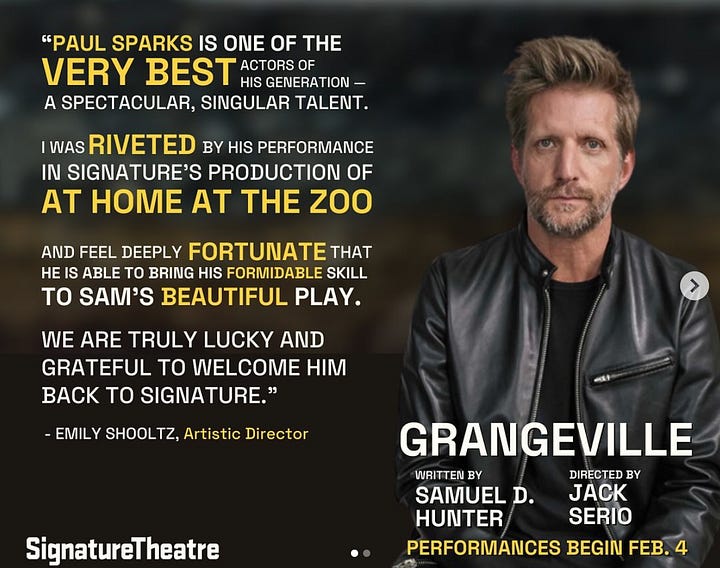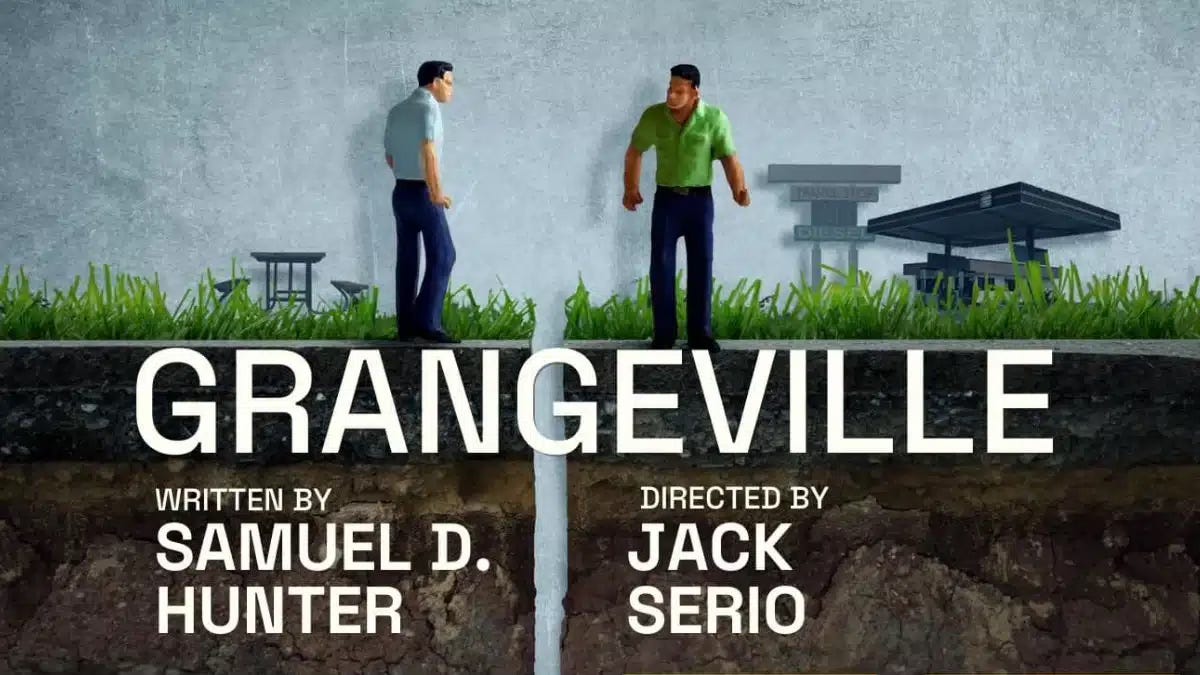GRANGEVILLE
Two brothers struggle to heal the rift separating them in Samuel D. Hunter's new play.
Structural Poetics
“Grangeville” in previews at the Signature Theatre is a new play by Samuel D. Hunter (“The Whale”, “The Case for the Existence of God”) about two alienated brothers navigating their geographic and emotional divides.
Arnold (Brian J. Smith), an artist living with his male partner in the Netherlands, is drawn back into Grangeville, the small Idaho hometown he has fled, with his mother’s approaching death. Jerry (Paul Sparks), his brother who has remained in Grangeville, attempts to bring Arnold back into the family but deep emotional wounds prevent them from coming together.
The play dramatizes this coming together as a series of affecting bridges that are crossed by the two brothers. At first the bridges are technological as the digital communications they are using seem to separate them more than connect them. As the brothers grow closer and we learn more of their back stories the playwright Samuel D. Hunter introduces a lovely structural sleight-of-hand.
The two actors take on two other characters with minimal changes to their costumes. The character of the alienated gay brother Arnold morphs for one scene into Jerry’s alienated ex-wife. And Jerry, the brother who remained in Grangeville, morphs into Arnold’s Dutch male partner.
The shift mostly works as the two secondary characters seem to echo many of the needs and aims of the primary characters. There is an odd but pleasing harmony in these secondary scenes, as if a melody was being repeated.
The Show Must Go On
A month before opening Brendan Fraser, a star, dropped out of the production. His reasons for doing so were unstated but the production was upended by his departure. Signature Theatre itself has been in crisis mode with its future uncertain, particularly economically. And Fraser’s departure which the theater was banking on for a much needed infusion of box office cash added woe to woes.


Enter the talented actor Paul Sparks who took over the role of Jerry weeks before the show opened. In Sparks, the production has found its center. He makes his Jerry, an almost thoroughly unlikeable character, a portrait of a flawed, needy human being who is yearning for some kind of absolution. And his portrayal of the secondary character, the brother’s Dutch lover, is a quiet triumph of realism and feeling. I felt that it was the highlight of the production. Paul Sparks is an actor to watch.
Disconnected Dots
The production has been directed by Jack Serio and the text seems to have been mostly well served by him. Yet the production relies on big and voluble emotional moments from the performance of the character of Arnold to punctuate and create scene and act climaxes. These punctuations often feel repetitive and more about the nailing down of a dramatic arc rather than an honoring of the understated flow of Hunter’s play. The production might have done better by resisting these big moments and to have remained understated until its closing physical confrontation.
The fabulous theatrical production design team Dots (“Oh, Mary!” “The Sign in Sidney Brustein’s Window”) created the set, a largely static shadow box with highly stuccoed surfaces which catch the light in alluring way. Even though the theme of the shadow box runs through the play, the set fights with the production rather than aiding it. It has only a slight strip at its back for lighting that is largely about lighting itself and not the actors. For a play with so many shifts of locations, points of view, and characterizations a more versatile and fluid lighting design is called for. Dots hamstrings the play by insisting on its own fixed, formal, and elegant reading.




